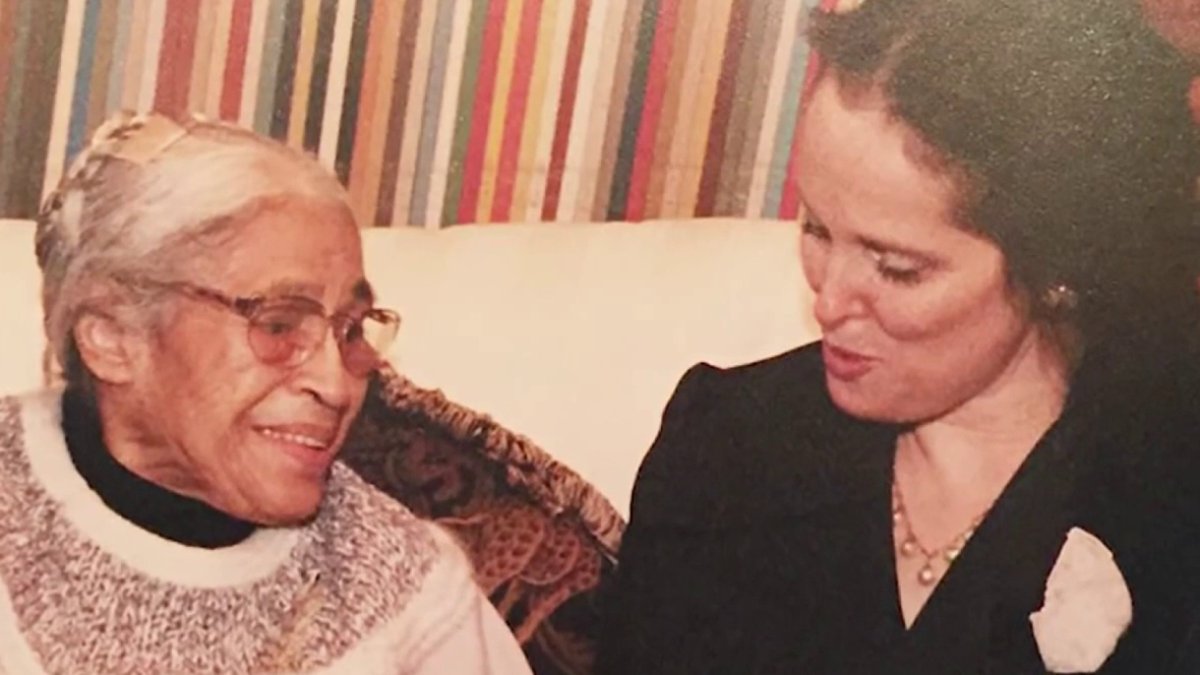
Throughout Washington, D.C., there are monuments to Rosa Parks – a statue in the U.S. Capitol, a carving at the National Cathedral, the dress she wore on Dec. 1, 1955, when she refused to give up her seat to a white passenger on a Montgomery, Alabama, in the National Museum of African American History – but the O Mansion on O Street NW is where she found a second home.
“She stayed here on and off for about 10 years,” Z Stein said.
Parks died in 2005, but over the last decade of her life, she spent a significant amount of time in the District.
“I think I was about 8 or 9 years old and I was a pretty quiet and shy kid, and she was really easy to approach,” Stein said.
We're making it easier for you to find stories that matter with our new newsletter — The 4Front. Sign up here and get news that is important for you to your inbox.
Stein's mom, H.H. Leonards, owns the O Mansion. In the early 1990s she ran a program called Heroes in Residence – veterans and American heroes could live there for free. Parks needed this space after she was attacked in Detroit.
“She was brutally assaulted in her home at the age of 81,” said Leonards, who spoke at the Rosa Parks Museum in Montgomery Thursday, 67 years to the day Parks refused to give up her seat on a bus to a white person.
“She never returned to her home again,” Leonards said. “It had too many memories. It's why she came to Washington, because she didn't have any money. People think people that are famous have money. Anything that she ever got she gave back to others less fortunate,” Leonards said.
Prince George's County
Prince George's County, Maryland, news updates, events and information
In Leonards' new book, “Beyond the Bus,” she wrote about her friendship with Parks and corrects the record on who she really was.
“People think about Mrs. Parks as just an icon for civil rights on one day, but starting in the 1930s, she documented rape victims – both men and women in southern Alabama – at her own risk,” Leonards said.
Parks investigated the brutalization of Blacks under Jim Crow. When she was arrested for refusing to give her seat up to a white passenger, the bus boycott and civil rights movement that followed introduced her to the world. But sometimes the whole of a leader is lost in history. Leonards is dedicated to telling the whole story of Parks, her friend she first met in Washington.
“We bonded on the soul and the heart and not on her fame, and because of that, she trusted me,” Leonards said.
Leonards said Parks purposely downplayed how badly she was hurt in the attack at her Detroit home because she didn't want children to think they could be assaulted in their homes like she was. She said she and Parks traveled the country and she was with her when she spoke at her museum in Montgomery some 20 times.
The O Museum is open to the public, but reservations are needed for a tour.
Sign up for our Breaking newsletter to get the most urgent news stories in your inbox.